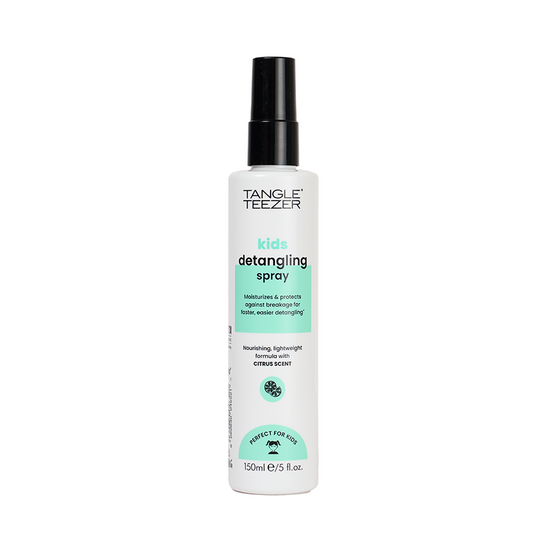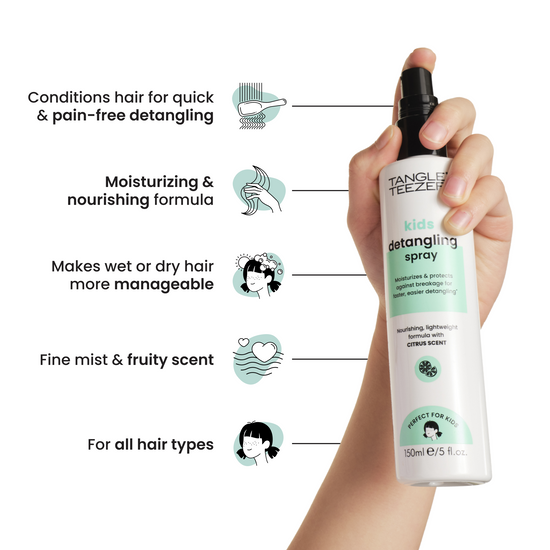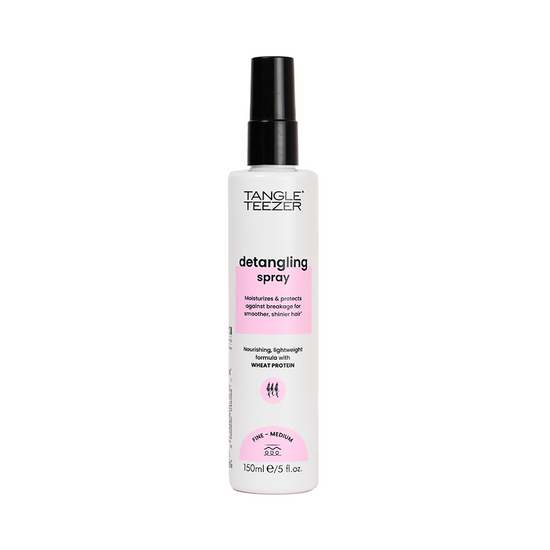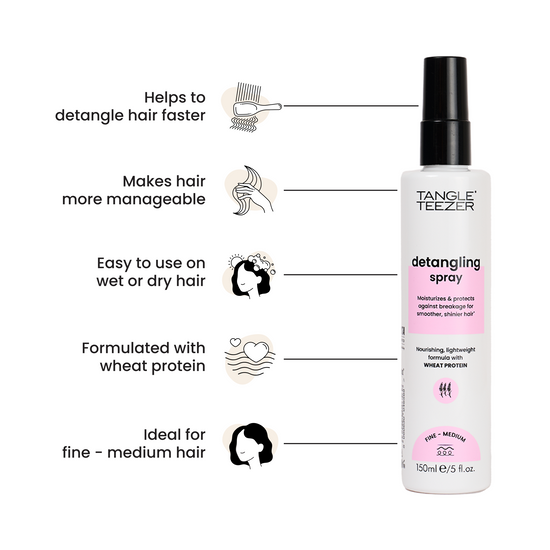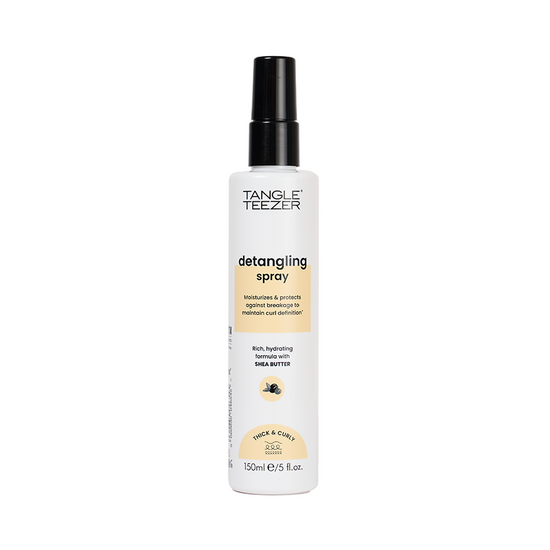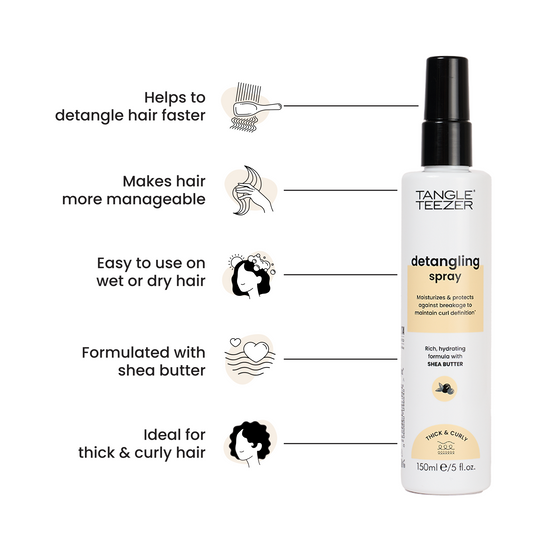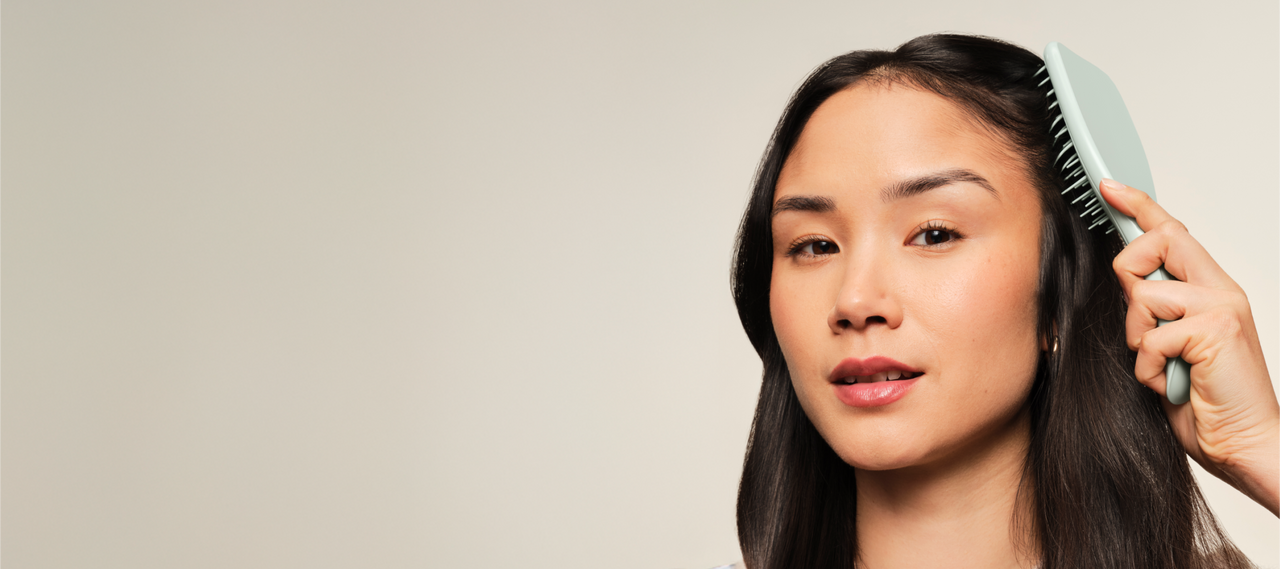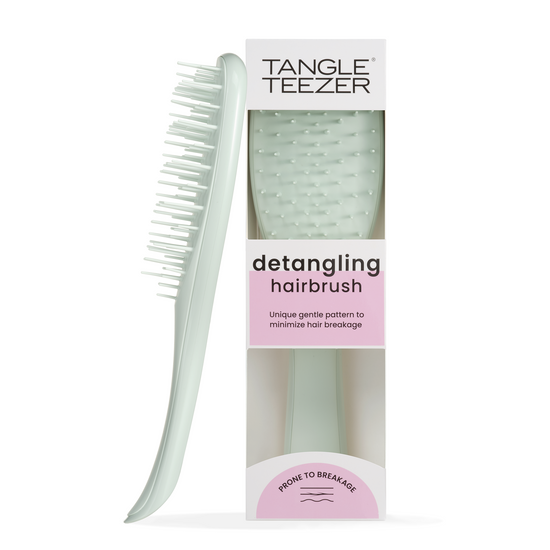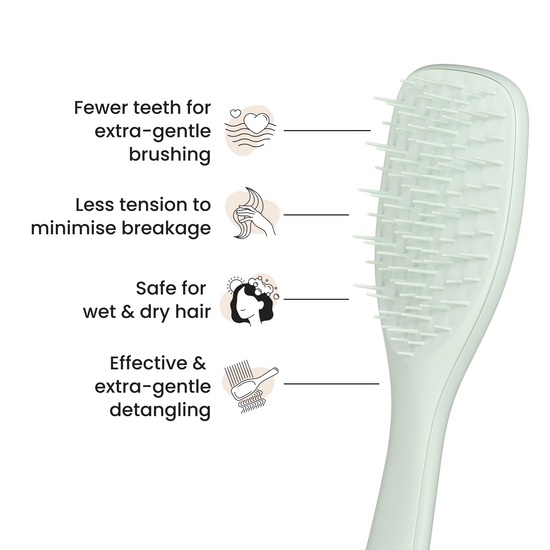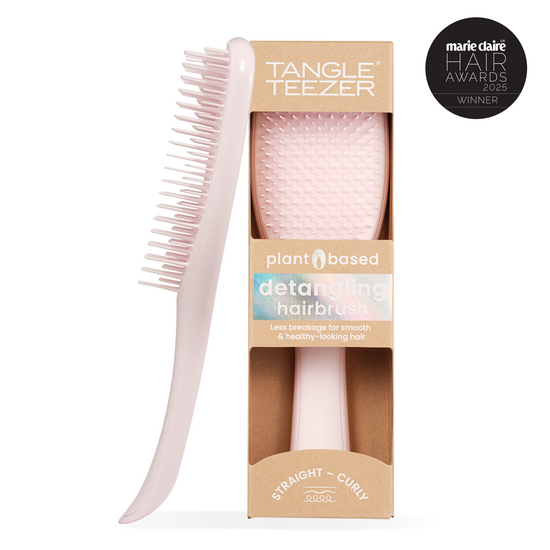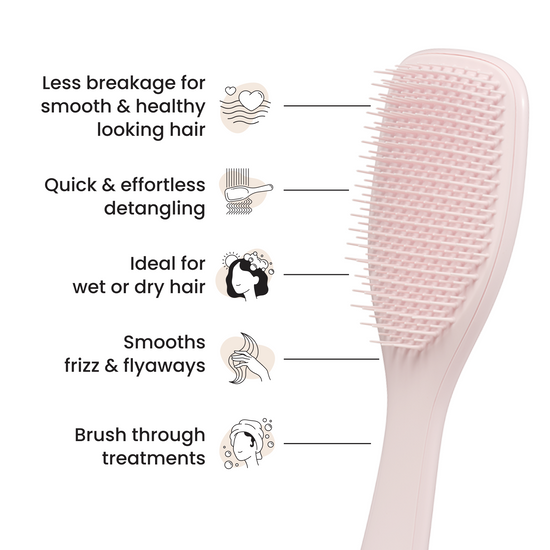With over half of us experiencing hair loss in our lifetime, and many more experiencing hair breakage, it is so common to be anxious about brushing your hair.
Watching strands collect in the brush can be distressing, especially if you're already experiencing hair thinning or fragility. This can lead to you avoiding brushing altogether, worried that the act itself is causing hair loss. But here's the truth: brushing doesn't cause hair loss, but the wrong brush can worsen hair breakage. And with the right technique and the right tools, brushing can actually support healthier hair.
If you are noticing more hair fall and breakage in your brush the Tangle Teezer Extra Gentle Detangling Brush has been designed for this exact concern, but before we get to how this innovative brush can help your hair health, let’s cover the science behind hair loss and breakage.
What causes hair loss and the hair growth cycle
To understand hair fall, we need to talk about the hair growth cycle. Each hair follicle goes through three main phases:
- Anagen (growth phase): Lasts 2–7 years, depending on genetics.
- Catagen (transitional phase): Lasts a few weeks.
- Telogen (resting/shedding phase): Lasts 3–4 months before the hair naturally sheds and a new strand begins to grow.
It's normal to shed between 50–100 hairs a day as part of this natural cycle. Hair loss occurs when the balance of these phases is disrupted — due to stress, illness, hormonal changes, nutritional deficiencies, genetics or certain medical conditions.
Once the hair growth cycle has been disrupted, there is nothing we can do to stop those telogen hairs from coming out eventually. In fact, brushing helps those hairs to shed and lets the new hairs grow through.
Even so, when you are experiencing more hair shedding, brushing your hair can be really scary, so choosing a gentle brush to minimise friction and tension on the hair is key.
-
Hair Loss - Comb vs. Extra Gentle Brush
The difference between hair breakage and hair loss
What lots of people mistake for hair loss is actually hair breakage – rather than your hair shedding from the root, the hair shaft snaps causing more shedding and your hair to look thinner and frizzier. This is where the wrong brush can make things much worse.
When your hair is damaged, your hair cuticle is weakened. The cuticle is the outermost layer of the hair shaft — a protective coating made of flat, overlapping cells. When hair is healthy, these cells lie flat and smooth, protecting the inner layers from damage.
But when hair is exposed to heat styling, bleaching, chemical treatments, or rough brushing, the cuticle becomes lifted, cracked, or worn away. This makes the hair weaker, more porous, and prone to snapping, particularly when brushing or when your hair is wet.
Breakage typically happens mid-shaft or near the ends and is caused by external damage, whereas true hair loss begins from the follicle. Understanding this difference is vital — because while we can’t always stop natural shedding, we can prevent breakage with the right care.
- Gentle brushing with less friction with Extra Gentle Detangler
Avoiding brushing might feel like a protective move, but it can actually be worse for your hair overall. Brushing is essential for:
-
Distributing natural oils (sebum) from roots to ends, keeping hair moisturised and resilient.
-
Detangling to prevent knots that can cause mechanical breakage later.
-
Stimulating circulation in the scalp, which supports healthy follicle function.
-
Removing shed hairs that would otherwise collect and tangle.
Brushing damaged or vulnerable hair needs a gentle, careful approach — and that starts with the right tool.
How the Extra Gentle Detangling Brush reduces hair fall and breakage
The Tangle Teezer Extra Gentle Detangling Brush has been designed specifically for hair that’s fragile, and prone to breakage.
The wider-spaced teeth at the edges reduce tension and pulling to minimise hair fall and breakage, while the denser teeth in the centre allow for gentle but effective detangling, smoothing the cuticle rather than lifting or catching it. Its flexible two tiered design helps glide through tangles without snagging — minimising the mechanical stress that causes snapping.
If you’re experiencing hair shedding or managing damaged hair, brushing doesn’t have to be a source of stress. With a deeper understanding of hair science and the Extra Gentle Detangling Brush, you can turn brushing into an act of care, to support healthier hair over time.
